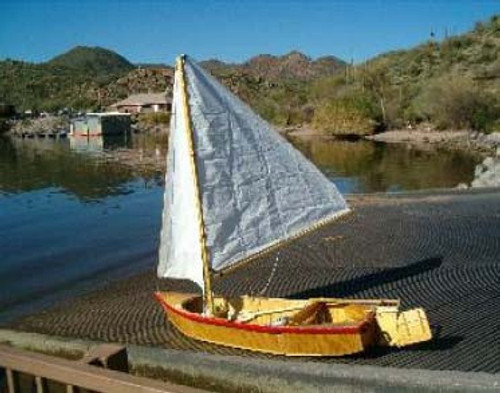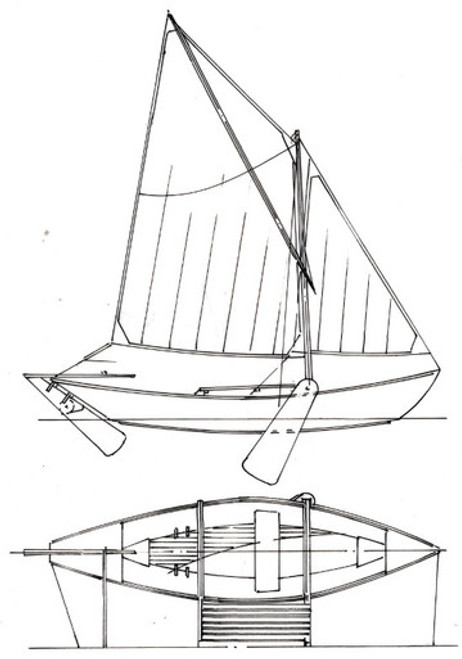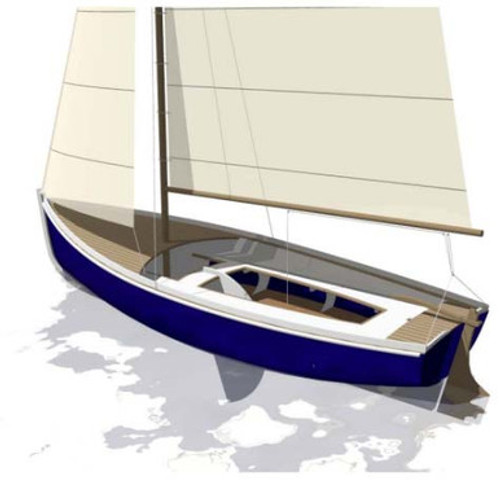TOTER-2 Sail (suppliment):
Well, as promised, the TOTER2 SAIL Plans are now available. It has been a fun, yet demanding, project. Some of the rigging details were lifted from the Pollywog, but because this is a smaller boat, new and simpler methods of assembly and attachment were devised. First, let me say the TOTER2 hull has proven to be up to the task of being driven by the wind. The optional 4-foot length of the center module works especially well with the sail version and is strongly suggested for those that intend to use the boat for both motor and sail functions. Because the 10-foot mast design is of the take-apart type, it was necessary to provide support stays for rigidity. The 7-foot boom folds in half, and both can store in the bottom of the center module for transport. The sails, main and jib, are of white polytarp, and the plans provide instructions on how to fabricate them from the larger tarp material. Halyards conveniently run through the center of the mast. Attachment points for all sail-related gear are by large screweyes and snap hooks. This deviates from sound marine practice, but the boat and sails are small, and so are the forces acting upon them. I am sure some builders may opt to upgrade the hardware, but as specified, the total cost of sail-related materials is under $125.
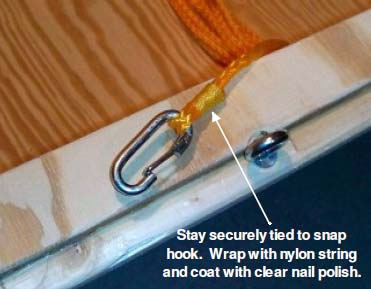
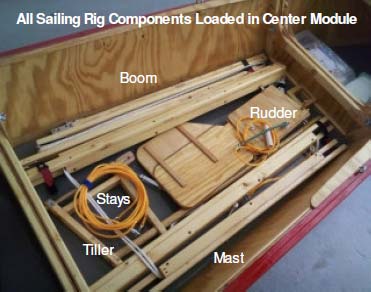
The plans also include drawings for optional sponsons, to be attached to the main hull side walls. These have not yet been fabricated, as I have not been in a situation that warranted the extra buoyancy. This is not to say they are not necessary; it is only that I have not yet been subjected to high winds that have placed me in peril. I will, however, build them before the blustery summmer winds approach.
Steering the rudder has been perplexing to me. On the one hand I want something solid in my hand, a tiller, that translates directly to rudder movement. However, having to shift position as the boat tacks from one side to the other, requires the tiller to be either short or capable of being flipped to either side. This is a small boat, and maneuvering room is at a premium. I first built a flip-over tiller, and it worked OK, allowing proper control of the rudder. But, it is bulky and sometimes got in the way. If you remember, I had the same complaint on the Pollywog. Eventually I decided to take another approach. Rather than solid, I chose flexible. With the addition of 4 pulleys strategically positioned, I was able to attach a 3/8" nylon rope from the rudder, along the port side, over to the starboard side, and back to the rudder (pictures below). This provides push-pull control of the rudder from anyplace in the cockpit, at any time. It works so well that I have added it as an option for the trolling motor version as well, without retrofit.
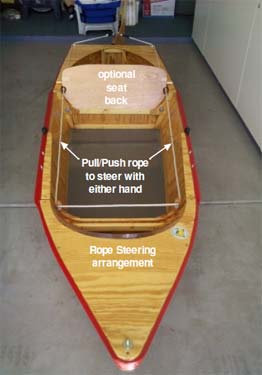
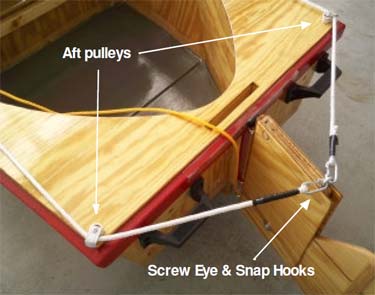
Back to the plans, which consist of 25 pages of drawings, photos and text, and describe to the best of my ability, how to mate the sail plans with the hull plans. If somebody builds the boat, and decides at a later date to add the sail rig, it is entirely possible. My only suggestion is they build the 4-foot extended center version, as it provides a better sailing hull. As you may have noticed on my website, I am offering 2 plans for the price of 1 during these difficult economic times. What this means for TOTER 2 builders is that they can get the Sail Plans for free. I contact them after they purchase a plan set, and ask what other of my plans they wish to receive, for free. It is my way of saying thanks.
This video gives a pretty good overview of the boat assembly and its capabilities. The many times I have been at the lake with TOTER 2, testing the motor or sail rig, I have received numerous compliments. It attracts attention, probably because people rarely see a real wooden boat any more. The fact that it is small, yet seats two occupants in tandem comfortably, and transports in just about any vehicle (without a trailer) is a real bonus. So, in conclusion, TOTER 2 is a truly multifunctional little boat. It can be paddled, rowed, motored and sailed, and used for fishing, day sailing or just leisurely cruises around the local pond or lake. Furthermore, it won't break the bank to build or operate. It's easy to assemble from common materials, and it's fun and safe to use by just about anyone.
Best regards,
Ken Simpson

